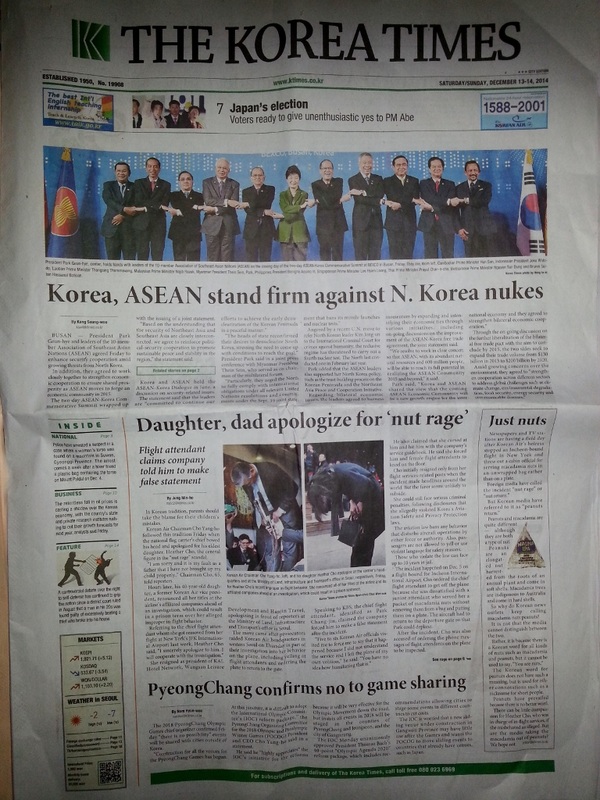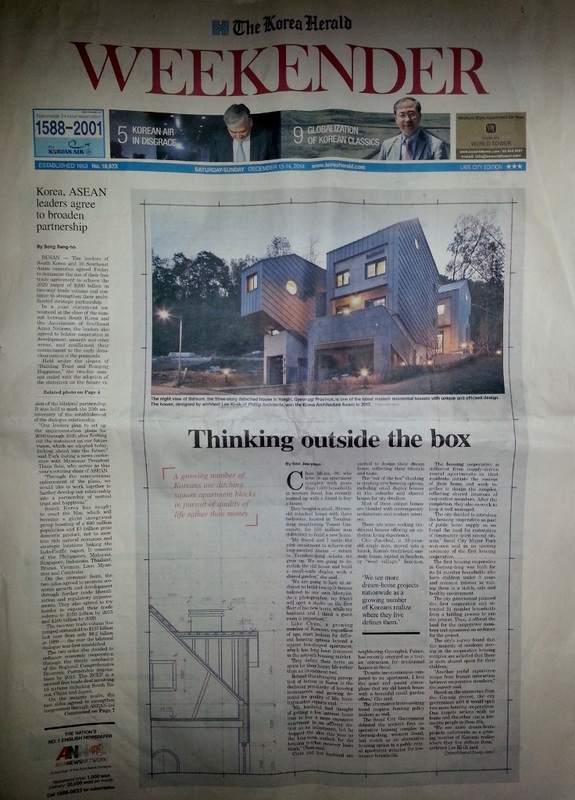Within the foreign community in South Korea, both newspapers are influential, moreso than any other Korea-focused, English-language news media, I think. More importantly, though, when the big players in media abroad want to run a news story on something related to Korea, they will often quote one of these papers because they are in English, so the influence of these two newspapers is much bigger than you’d think. In a given month, I expect that many millions “get information” from these Korea Times and/or Korea Herald, indirectly, via material these newspapers originally reported on Korean affairs in English which is then quoted by other media abroad. This happens, for example, in December 2014 in the Korean Air “nut” fiasco.
Here are my impressions of the two newspapers as they have existed from the late 2000s to the early-to-mid 2010s when I’ve known them and occasionally read them. I base the below on years of off-and-on observation. (Note: On a desktop computer, the two lists should display side by side. On other devices, they probably won’t be side by side, but the numbers will match up for comparison.)
|
Korea Times
|
Korea Herald
|
There is one other comment I can make. Look again at points #5 and #6 above for both Times and Herald, and then back at #1 (among other points). (With the caveat that the above list consists of my own impressions*:) Both newspapers’ stances are to the left of their parent (Korean-language) newspapers. Why is this? This is an interesting thing to consider.
* — I am reasonably sure that anyone familiar with both these newspapers will generally agree with me on most points above, and I am reasonably sure I can prove everything I said above with examples, but that would be a major project and no one is paying me.
Comment: Times published the “Korean Air nut rage” on its front page with rather humiliating photographs and use of the demeaning phrase “nut rage” (see, perhaps, #9 above). I would see this as reflecting its politics (see #1 above): This story makes South Korean big business, the chaebol system, look bad. Note also the little swipe at Japan (see #3 above) in the teaser to the story on Japan’s election, “Voters ready to give unenthusiastic yes to PM Abe”. Why ‘unenthusiastic’?
Comment: This issue’s theme is architectural design (See #10 above), with at least five full-length articles inside on this subject, among a lot of other cultural stuff; something about translating Korean classics into English, and lots about movies, art exhibitions, music and plays. The “Korean air nut rage” story is tucked away on page 5 with non-
humiliating pictures of the CEO and the daughter, and carrying the bland title “Korean Air chairman apologizes” . There is a lot of power in titles. That one gives very little information to the casual glancer, and may even seem positive; after all, isn’t apologizing a good thing? (See #1 above — I interpret this headline as differing in tone from the Times‘ due to the political stances of the papers; this sordid story of nepotism and bullying of subordinates is widely seen as a black mark for the chaebol system, i.e. big business, so left-leaning Times jumped at it while right-leaning Herald played it down; they could not ignore it because it had become such a huge story in the American media).


I was wondering if you had any references to back up your blog post on the editorial political leanings of the two papers. I’m writing a paper for an MA on the differences between news stories from different countries and I’ve chosen one story from the Korean Herald, however, finding out the political views of the paper with sources good enough to use as a reference is proving hard to do.
Thank you.